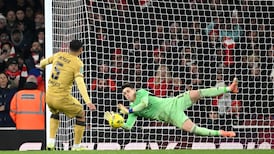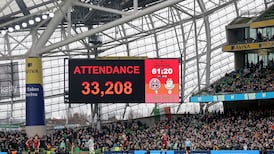May Day 2010. Aston Villa awake this morning lying fifth in the Premier League. Villa are level on points with Tottenham, who are fourth. The goal difference is telling.
Behind both are Manchester City, starting the day sixth, a further point away. And next on the fixture list: Manchester City versus Aston Villa.
It is Villa’s penultimate game of the season, whereas Manchester City and Spurs have three left. The odds are against Villa breaking into the Champions League places but it is achievable, particularly as Tottenham also have to travel to City. All season long Villa have threatened to “gatecrash” the Champions League party, as it is reported.
On December 12th, after winning 1-0 at Manchester United, Villa lay third, behind United and Chelsea. It is Martin O’Neill’s third full season since succeeding David O’Leary and Villa have the image of a progressive club.
By May they have already been in the League Cup final at Wembley – losing 2-1, controversially, to United – and again in the FA Cup semi-final, when Villa lost 3-0 to Chelsea. In all it will be a season of 52 matches – more than City and Spurs play.
Model owner
And now it all hangs on this, the 51st. What we do not know until later is just how much hangs on it. In minute 16 Villa take the lead via John Carew, running onto a Stewart Downing pass. As O'Neill jumps to celebrate, City's manager of six months, Roberto Mancini, shudders. Down at White Hart Lane, Spurs manager Harry Redknapp knows Villa are above them as it stands. He needs a goal against Bolton.
At this moment, Randy Lerner’s purchase of Aston Villa just shy of four years earlier seems astute. The restrained American appears close to a model owner.
When Lerner arrived, Villa had just finished 16th in the Premier League. O'Leary was increasingly unpopular and Doug Ellis was still in the boardroom. Now, after three and a half years of investment, enabling O'Neill to recruit the likes of Downing, James Milner, Ashley Young and Stilian Petrov, all of whom he named this day at City, Villa were on the cusp.
But Man City were also investing. They too had been taken over – by Abu Dhabi in 2008 – and the petrodollars meant that Mancini could field a forward line of Carlos Tevez, Emmanuel Adebayor and Craig Bellamy. In defence there was Vincent Kompany and Pablo Zabaleta.
And sure enough, just before half-time, Tevez equalised. Adebayor followed with another goal and Bellamy added a third. Down at White Hart Lane, a Tom Huddlestone goal had been enough for Tottenham to defeat Bolton. And with that combination of results and goal difference, Villa could no longer qualify for the Champions League.
They had another game, at home to Blackburn Rovers, then managed by Sam Allardyce. It was lost to a late Richard Dunne own goal. Villa had run their race. They had come sixth. It was for the third consecutive season. In terms of points they had gone from 60 to 62 to 64, but Villa remained sixth, sixth, sixth. This was the ceiling Villa were smacking against.
Manchester City, meanwhile, had gone from ninth, to 10th to fifth. From 50 points in 2009, City had 67 in 2010. This was great for City, but Villa were one of those feeling the consequences of oil.
It was to get worse. O’Neill had seen Gareth Barry leave Villa for City at the start of this 2009/’10 season and now Milner was going the same way. We still do not know the full detail of O’Neill’s departure from Villa Park but sales and investment would seem to have something to do with it. Whatever it was, O’Neill walked away on the eve of the 2010/’11 season.
Villa appointed Gerard Houllier, then Alex McLeish. They dropped from sixth to 16th in two seasons. Manchester City kept investing. They went from fifth to first in two seasons. Three points separated City and Villa in May 2010, 51 points separated them in May 2012.
The scale of that transformation cannot be placed solely at City's wallet, but a lot of it stems from there. City's impetus stems from there. It was the same when Roman Abramovich took over Chelsea in 2003. Newcastle United had just finished third in the Premier League then, a place above Chelsea. Two years later, Chelsea were champions and Newcastle were 14th.
John Hall would say that Newcastle’s owners could no longer compete. Millionaires, they could fight, but not billionaires. They gave up and sold up.
For Newcastle and Abramovich, read Aston Villa and Abu Dhabi. Lerner is in the same position as Hall, only he cannot find a buyer at his asking price.
Historic clubs
As we look at the Premier League table, Villa are bottom and Newcastle are second-bottom. The country laments that these established, historic clubs can no longer challenge while the people running them sack manager after manager. Tim Sherwood is merely the latest.
Sherwood’s role in the overall act of Villa’s demise is small in comparison to what Abu Dhabi did to Aston Villa’s ambitions.
There are of course other factors – Swansea City and Stoke show what can be done with competent and imaginative ownership and management – but the point is that big international money has bruised and hurt Aston Villa. There have been poor decisions individually but there has also been a change in the English football landscape.
McLeish said this week that his priority on arrival at Villa Park in 2011 was “downsizing” – the wage bill, the squad, transfer fees. It’s not a word heard often at City, one imagines.
In reality the downsizing began the previous May Day when they lost at Manchester City. Six years on, next May it will be no surprise to see City win the league again, just as Villa are relegated.
BIRMINGHAM’S ROWETT MANAGING HIS WAY TO THE TOP
Alex McLeish moved directly from Birmingham City to Aston Villa, which was never going to endear him to certain citizens in England’s “Second City”. Now Birmingham have another manager being coveted.
Gary Rowett took the Blues job this week last year. It followed an 8-0 home defeat to Bournemouth. In Rowett's first game, Birmingham kept a clean sheet. That was the start. It came in a midlands derby against Wolves. And it's Birmingham v Wolves again.
Rowett has taken a team 23rd in the English Championship to sixth.
He is calm and measured and has helped bring stability to a previously volatile club. That in itself is an achievement but the 41-year-old hired from Burton Albion could be capable of more.











